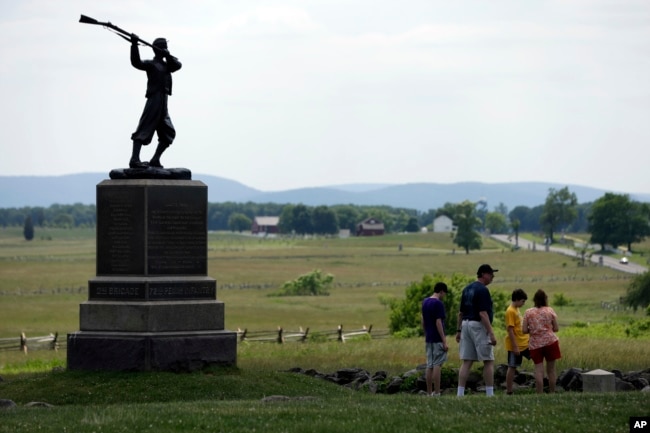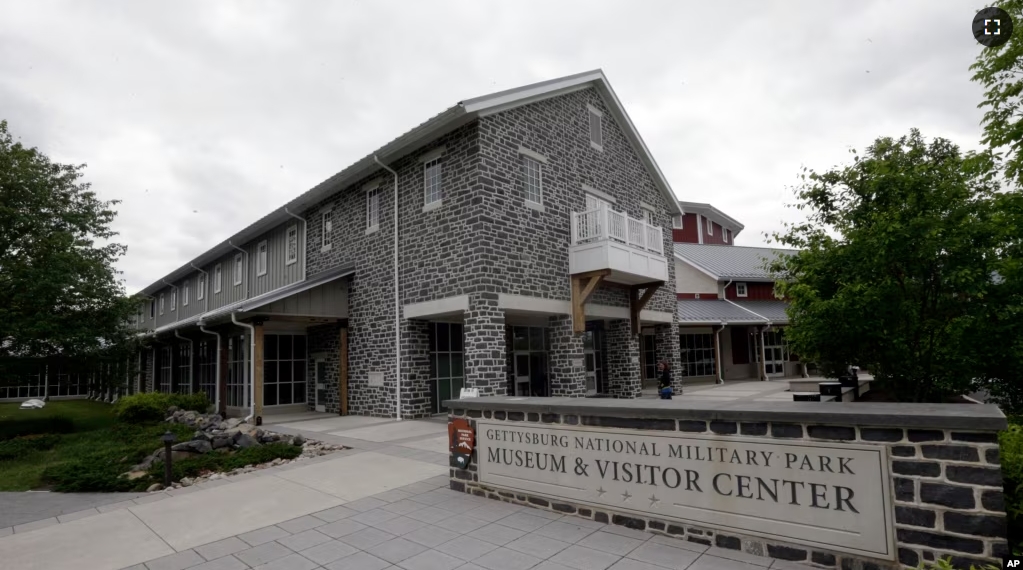The Gettysburg National Military Park is in the small town of Gettysburg in the eastern state of Pennsylvania.
Much of the area around Gettysburg still looks like it did in the 1860s, during the American Civil War. The town is in the middle of good farmland.
Roads pass through Gettysburg that lead to Baltimore, Washington, D.C., and other eastern cities. It is hard to believe that two huge armies fought there.
One fighting force was the United States Army of the Potomac, commanded by General George Meade. The other was the Confederate Army of Northern Virginia led by General Robert E. Lee. Lee’s troops had moved north into Pennsylvania from Virginia.
Lee believed that a Southern win of a battle on Northern land would force a negotiated settlement of the Civil War and mean independence for the Confederate States.
The battle of Gettysburg began on July 1, 1863. About 170,000 soldiers fought for three days. When it ended on July 3, more than 50,000 soldiers were dead, wounded or missing.
Lee’s army lost the battle.
Many visitors start their visit to Gettysburg at the Gettysburg Museum of the Civil War. The museum has a large collection of Civil War objects. The museum has more than 1 million artifacts, from soldiers’ private notebooks and clothing to maps of the battlefield.
The museum also houses the Gettysburg cyclorama painting. This kind of artwork completely surrounds the people looking at it.
The painting shows the artist’s vision of the final major attack of the battle on July 3, 1863. Over time, it has come to be called Pickett’s Charge. George Pickett was one of several Confederate commanders ordered to make the charge.

The Confederate soldiers reached a point close to the northern lines and headquarters. Today, the point is called the “High Water Mark.” Northern forces then turned the Confederates back.
The charge failed. Southern forces would never again reach so far north.
Soon after the battle, people began to visit Gettysburg to try to understand what happened there. One of those visitors, on November 19, 1863, was President Abraham Lincoln. He was invited to help dedicate a burial ground for Union soldiers killed in the battle.
Lincoln spoke for just two minutes. But his speech, known as “The Gettysburg Address,” is one of the most famous pieces of American oratory.
I’m Mario Ritter, Jr.
Nancy Steinbach and Ashley Thompson with additional material from the National Park Service for VOA Learning English. Mario Ritter, Jr. adapted it for the VOA Learning English podcast.
____________________________________________________
Words in This Story
museum – n. a building in which interesting and valuable things (as works of art or historical or scientific objects) are collected and shown to the public
artifact – n. a usually simple object (as a tool or ornament) showing human work and representing a culture or a stage in the development of a culture
vision – n. a thought, idea, or object formed by the imagination
dedicate – v. to set apart for some purpose and especially a sacred or serious purpose
oratory – n. the job of making speeches in public
